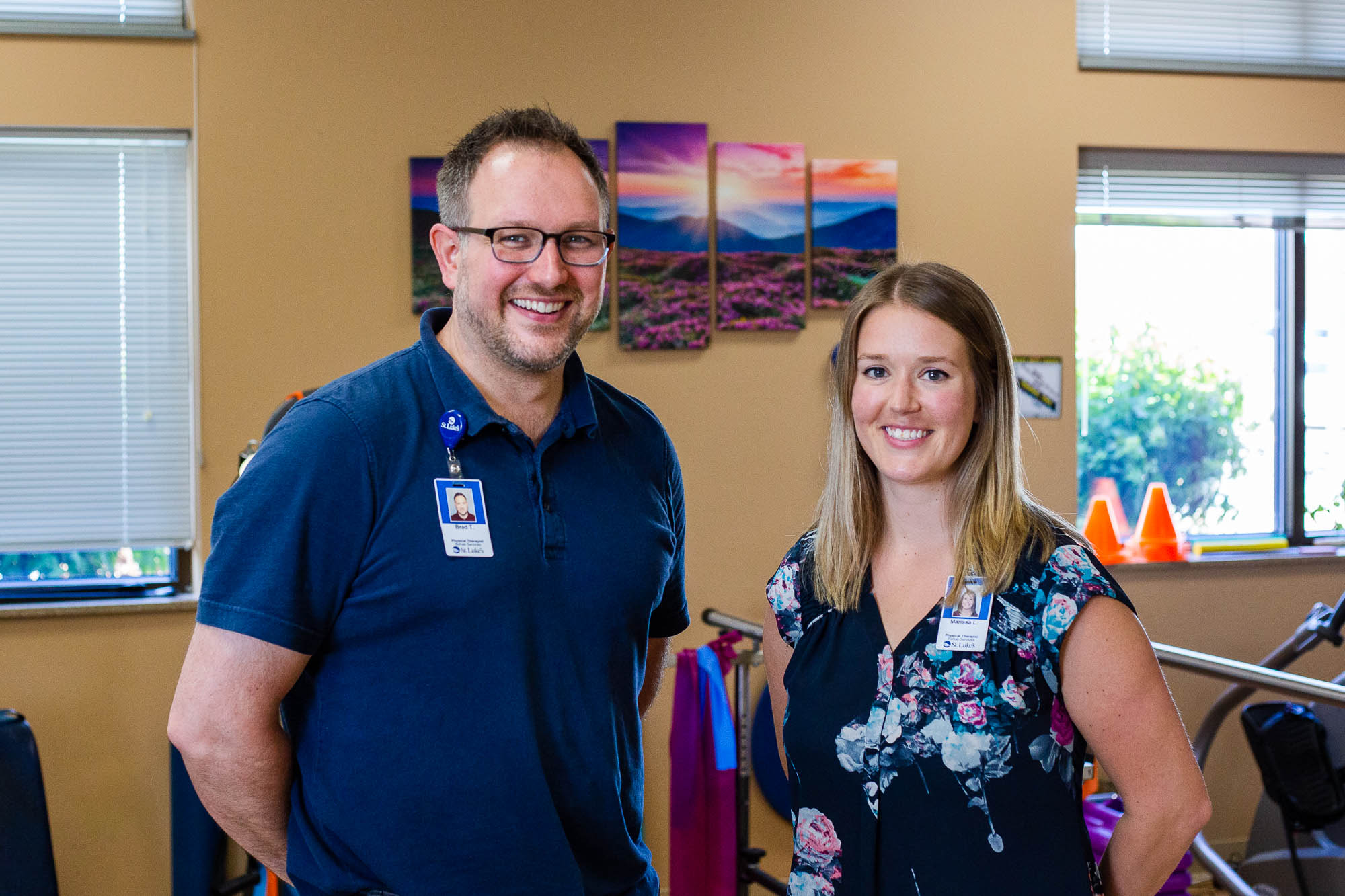Precision Healing with Trigger Point Dry Needling

Marissa Levine, PT, DPT, performs trigger point dry needling on Aspirus St. Luke's patient Denise.
Offering relief and healing for tissue- and muscle-related aches and pains
“I was terrified to try dry needling,” said St. Luke’s patient Denise Clark. “But my physical therapist Marissa talked me through it, and I found out that it doesn’t even hurt! My range of motion used to be so bad, I had to walk with my head down. But now I can actually look up and around! It's made a huge difference.”
Trigger point dry needling uses a thin needle to penetrate the skin and stimulate a trigger point in the body. This helps increase circulation and relieve pain. Treatment is usually followed with massage to continue stimulating the tissues.
Common conditions that can be treated with dry needling include:
- Neck and back pain
- Shoulder/elbow/hand pain
- Hip/knee/foot pain
- Buttock and leg pain (sciatica, hamstring strains, calf tightness or spasms)
- Plantar fasciitis
- Scar tissue restrictions or pain
While this treatment may seem similar to acupuncture, it is different. “Acupuncture is more about the system,” said Aspirus St. Luke's Physical Therapist Brad Tavernier, PT, DPT. “The sessions and the treatment typically take longer. Dry needling is focused on one or two muscles in the body, and treatment can be done in as little as 15 minutes.”
 Aspirus St. Luke's Physical Therapists Brad Tavernier, PT, DPT, and Marissa Levine, PT, DPT both offer trigger point dry needling at Aspirus St. Luke's Mariner Medical Clinic in Superior, WI.
Aspirus St. Luke's Physical Therapists Brad Tavernier, PT, DPT, and Marissa Levine, PT, DPT both offer trigger point dry needling at Aspirus St. Luke's Mariner Medical Clinic in Superior, WI.
Dry needling can also be done with electrical stimulation (e-stim). This is when a low voltage electrical current is intermittently provided to a sore muscle through an inserted needle. This helps relax the entire muscle and can help engage muscle fibers that were previously restricted by pain. Dry needling with e-stim is typically done for one minute per muscle.
“I love offering dry needling to people because I’ve seen how it can improve symptoms,” said St. Luke’s Physical Therapist Marissa Levine, PT, DPT. “It also doesn’t require any medications, which means patients with diabetes or hypertension won’t see the side effects they would if they received injections.”
Learn more at slhduluth.com/DryNeedling.
Want to see a demonstration? Watch a video here.


